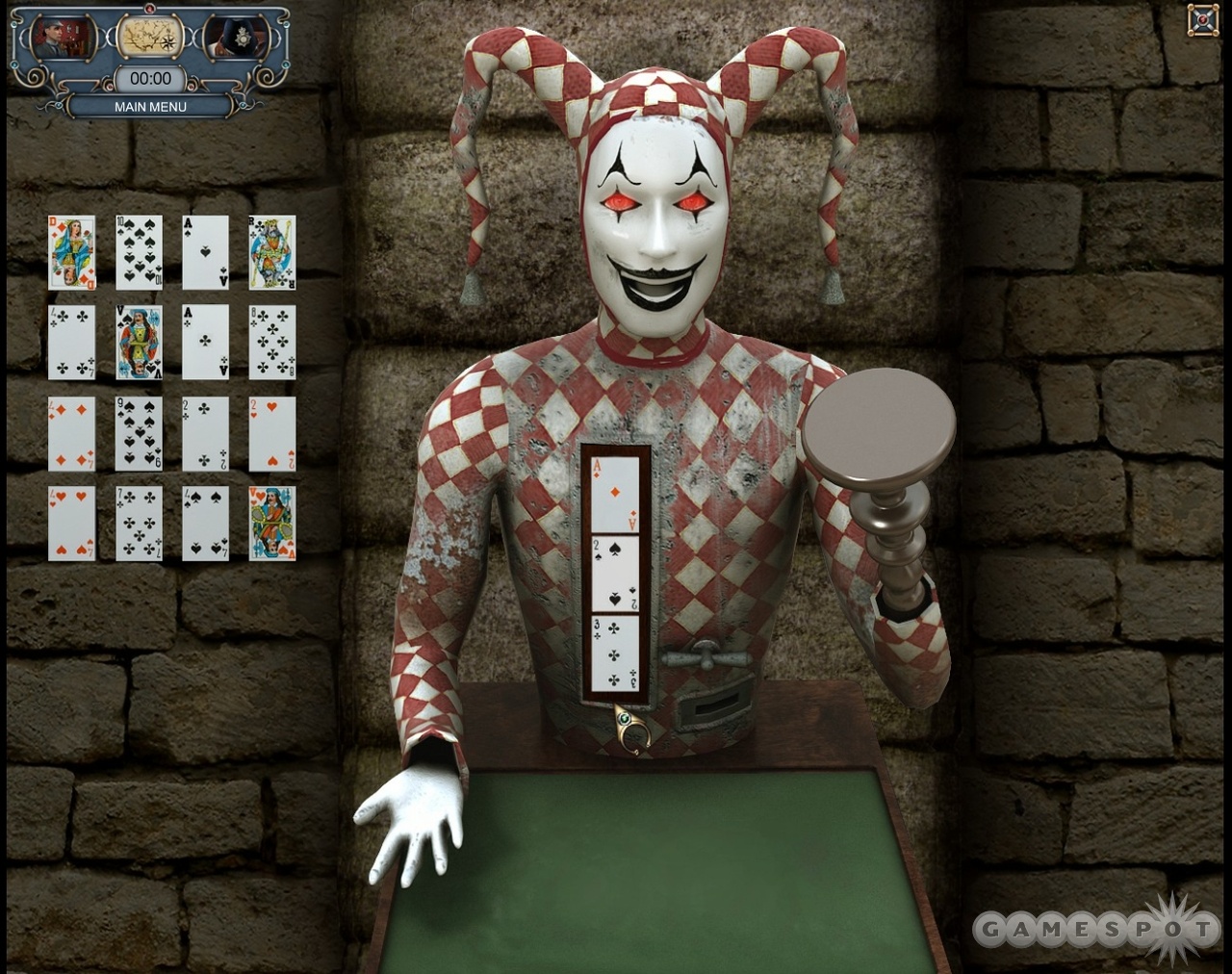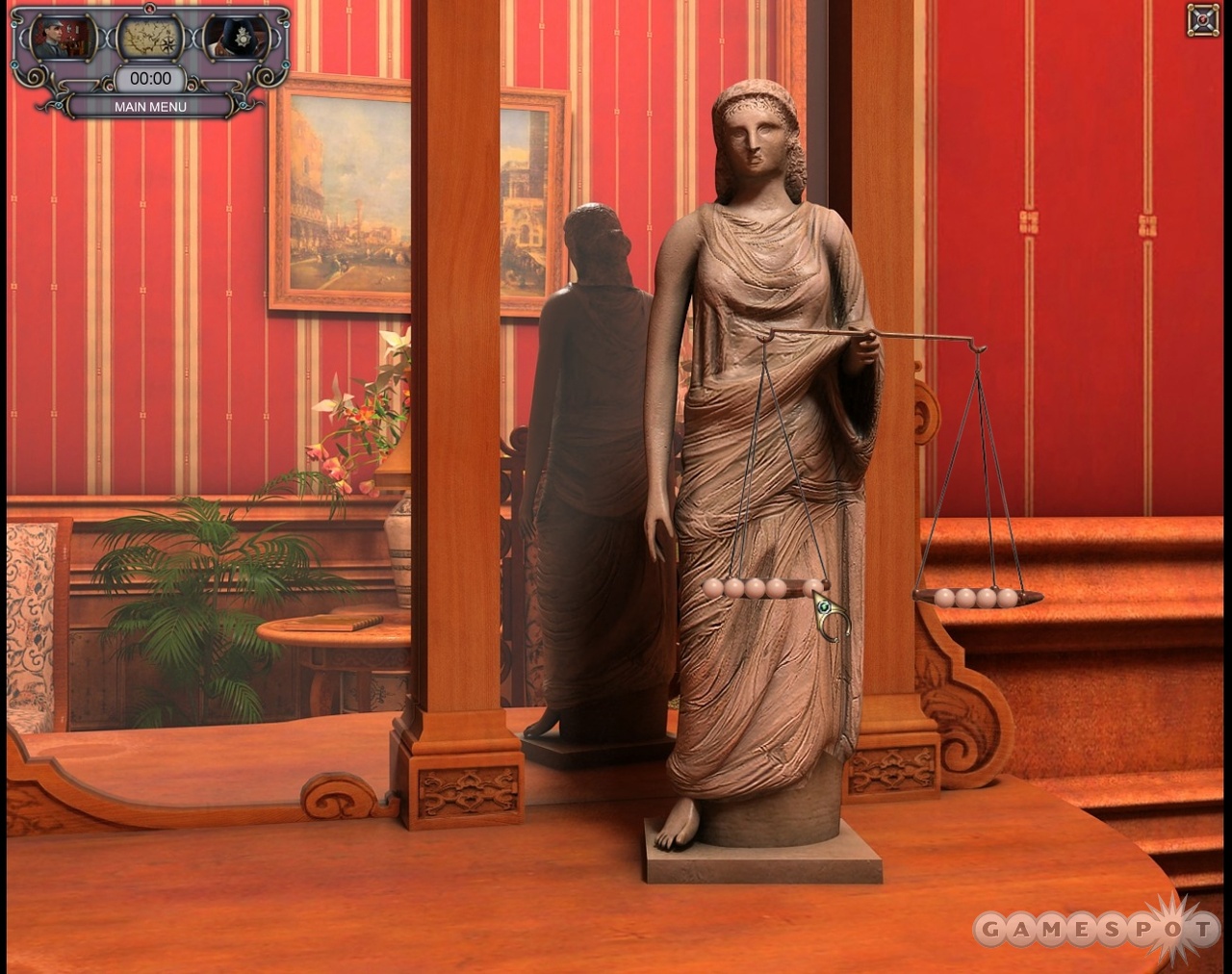Disappointment is likely to be the first reaction to Sherlock Holmes and the Mystery of the Persian Carpet. Anybody expecting a proper follow-up to Frogwares' recent adventures that pitted the Victorian supersleuth against the likes of Cthulhu and Jack the Ripper will likely feel let down by this offbeat collection of hidden-object and logic problems. But even though this is lighter fare than Frogwares usually produces in its Holmes line, the puzzles and brainteasers on offer here are devilishly challenging for the most part. It's also a good adventure for kids, with the gruesome subject matter of the recent Holmes adventures toned down and the gameplay softened with hints and cheats.

Still, this style of play takes some getting used to if you're coming in from something like Sherlock Holmes vs. Jack the Ripper. While the setup is par for the course, with Holmes and Watson investigating the murder of a painter whose body was found wrapped in an ornate Persian rug, the framework of the gameplay is much different from what Frogwares has done in the past. Static screens have replaced the free-ranging 3D of prior Sherlock games, with you examining locales in and around London from fixed third-person perspectives. You wander through ornate parlors, as well as rundown factories, theaters, and offices, and give suspects the once-over with your magnifying glass down at Scotland Yard. The very attractive and atmospheric surroundings come accentuated with the violin-heavy soundtrack in the other Frogwares Holmes games, but they are rather lifeless due to the lack of movement and human contact (there isn't any voiced dialogue in the game).
Finding a prescribed roster of hidden objects is the immediate goal of your investigations on each screen. So, say hello to pixel hunting. This isn't as bland as the usual hidden-object game, though. Items are always relevant to the case, so at least you're looking for bloodstains, footprints, scraps of clothing, hair samples, keys, and cigarette ash in the usual places where such things can be found. Searching is still very challenging because much of this detritus is obscured by busy background scenery and many shadowy spots that make you wish the Victorians had invented the flashlight. Good luck spotting a smudge of blood or a patch of cigarette ash without squinting at your monitor or resorting to the three highlight hints allowed in each location.
Thankfully, there is a lot more to the Mystery of the Persian Carpet than scrolling your mouse across 1880's London. Every location is also decked out with one or two logic puzzles. All of them need to be solved in order to collect more items that Holmes needs to complete his deductions and identify the murderer with a callous disregard for how much it costs to dry clean an expensive rug. Most of these enigmas are standard fare, with Holmes being faced with sliding blocks, balancing scales, mazes of pipes, secret codes, and a selection of combination locks, but there are a few enjoyable oddities as well. The stick game where you compete to block off spaces on a gameboard is as addictive as Minesweeper, and a couple of the number problems on the combination locks are fiendishly inventive. The card game with an automated joker vending machine is also both tough and creepy. You have the ability to skip three puzzles per game through an auto-solve option, too, and all the big problems unlock so you can go back to play them on their own without going through the entire adventure. Skipping puzzles might be a necessity on some occasions because the game doesn't always explain what you're supposed to be doing. For example, that matchstick game is all trial and error at first, as is the joker card game.

Collected objects come in handy back at 221B Baker Street. Every scrap of cloth and pile of ash needs to be examined under a microscope or futzed around with alongside a Bunsen burner. These science-project experiments amount to little more than the busywork of manipulating a scalpel and tweezers with the mouse, but they do preserve the illusion that you're conducting a real murder investigation. Once all of the evidence is in, you solve the case on a deduction screen by linking suspects and evidence in a web of connections. A green line means good, a red line means sorry, try again. This isn't exactly solving a Rubik's Cube. But the process does make you sift through all of the clues, drawing lines from such things as footprints to a suspect's shoes, particular colors of ink to handwritten notes, and scraps of cloth to full articles of clothing. The exercise feels like something that Holmes would concoct--thoroughly logical and incredibly painstaking.
You could look at Sherlock Holmes and the Mystery of the Persian Carpet as a jumping-on point for young gamers or those who haven't yet tried one of Frogwares' Holmes adventures. The game isn't too tough, but it's not too easy, either. The game isn't too short, but it's not a lengthy slog that will keep you frustrated for days. Taken for what it is, the game is a good introduction to the long-running Holmes series, if not all that appropriate as a sequel to the other adventures that Sherlock and Watson have been starring in during the past few years.